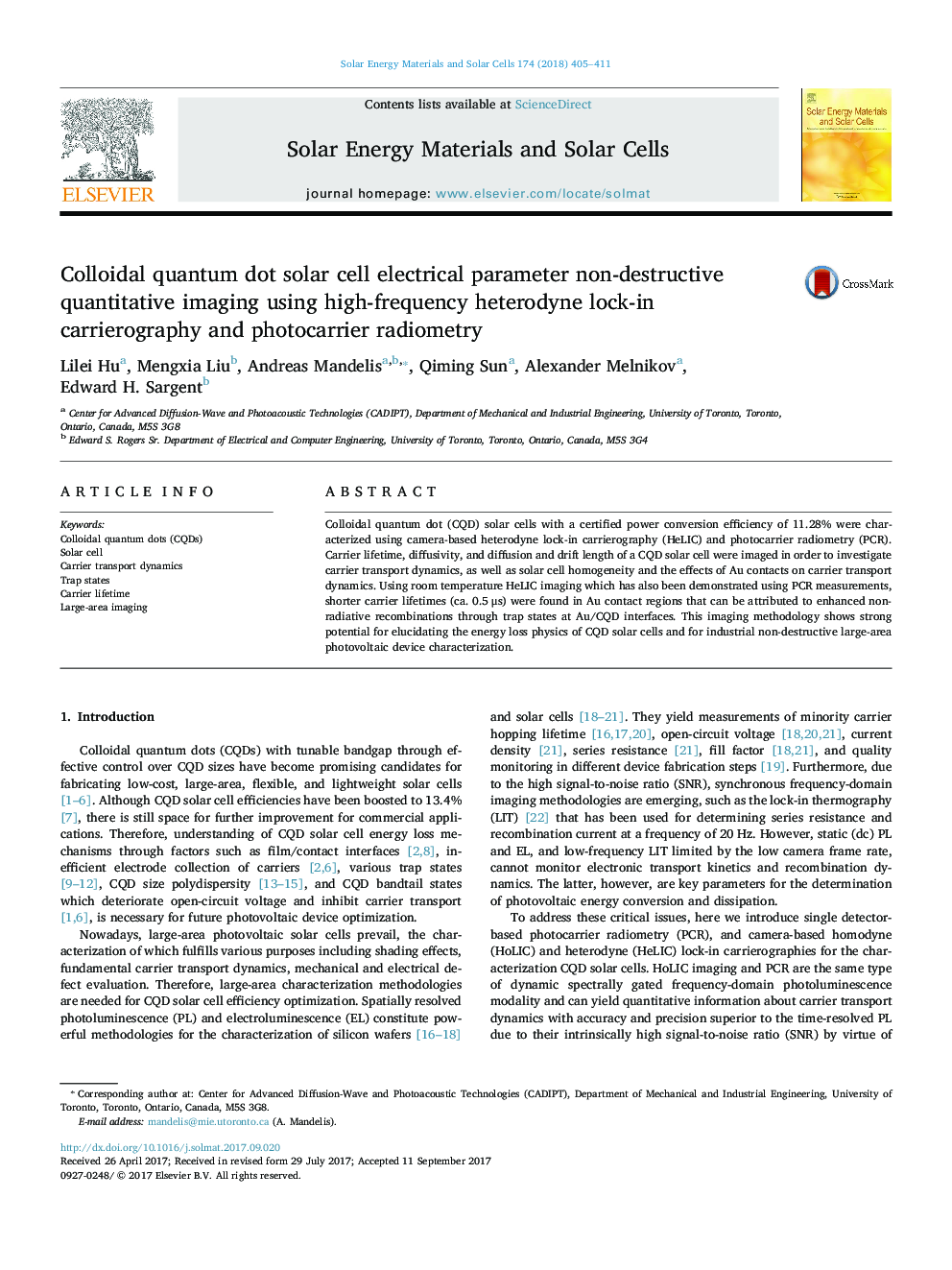| Article ID | Journal | Published Year | Pages | File Type |
|---|---|---|---|---|
| 6456706 | Solar Energy Materials and Solar Cells | 2018 | 7 Pages |
â¢Ultrahigh-frequency heterodyne lock-in carrierography (HeLIC) was developed.â¢HeLIC was applied to large-area CQD solar cell non-destructive imaging (NDI).â¢Obtain images of carrier lifetimes, diffusivities, and drift and diffusion lengths.â¢Electrode/CQD interfaces were found to reduce carrier lifetimes to ca. 0.5 μs.â¢Contact regions were found to exhibit high carrier diffusivity.
Colloidal quantum dot (CQD) solar cells with a certified power conversion efficiency of 11.28% were characterized using camera-based heterodyne lock-in carrierography (HeLIC) and photocarrier radiometry (PCR). Carrier lifetime, diffusivity, and diffusion and drift length of a CQD solar cell were imaged in order to investigate carrier transport dynamics, as well as solar cell homogeneity and the effects of Au contacts on carrier transport dynamics. Using room temperature HeLIC imaging which has also been demonstrated using PCR measurements, shorter carrier lifetimes (ca. 0.5 μs) were found in Au contact regions that can be attributed to enhanced non-radiative recombinations through trap states at Au/CQD interfaces. This imaging methodology shows strong potential for elucidating the energy loss physics of CQD solar cells and for industrial non-destructive large-area photovoltaic device characterization.
Graphical abstractDownload high-res image (636KB)Download full-size image
